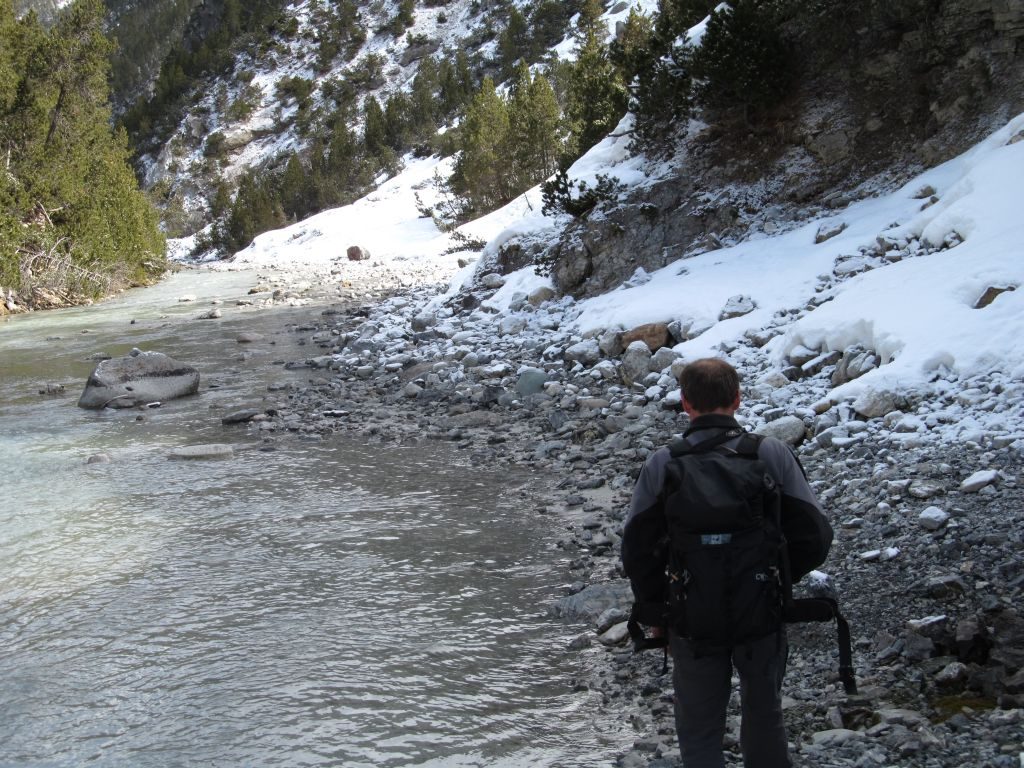The debate over energy sources in Switzerland has often focused on nuclear power, or how much solar or wind power should supply Swiss homes. One energy source often mentioned as a reliable mainstay is hydroelectric power. It is thought of as relatively clean, and abundant in the Swiss Alps. Over the weekend though a problem at a hydroelectric dam in Graubünden led to thousands of dead fish, and a river saturated with sediment. Officials are now reviewing what went wrong. WRS’s Tony Ganzer reports.
—
Part 1:
Part 2:
Just a few days after the technical malfunction at the Punt dal Gall dam, and a 6 kilometer stretch of the Spoel River through a national park was decimated, opinions seem to be aligned.
“As far as I understand it is really a catastrophic incident in the River Spoel.”
“The life in the whole river is completely wiped out, and it will take years, if ever, to restore this ecosystem.”
“It really is a disaster, you can say it like that. It is an ecological disaster.”
Those are three voices from interest groups connected to this story. We start with the last voice from Hans Lozza, spokesman for the Swiss National Park.
“At the beginning there was no water in the river bed, some of the animals [may have been killed] in that phase,” he says. “And later on, there was a spill with muddy water, and most of the fish in that river, and other animals in this river, had to die.”
Lozza says a glitch at the dam caused the river level to drop below a necessary minimum. Then, ducts were opened releasing sediment and residual water into the river.
“I don’t know if this has happened before. We didn’t hear of any such happening in other places. It is terrible that this has happened in a national park,” Lozza says. “The question is why could this happen, and what do they do that this won’t happen again in a later time.”
Police and cantonal officials are investigating what happened at the dam, and whether changes to law or practice are warranted.

Swiss National park spokesman Hans Lozza hikes along the River Spoel 
Silt-caked rocks still line the River Spoel
“We will see what the investigation will show—what really happened there,” says Michael Casanova, project head for energy and water policy at ProNatura.
“But normally we have say, the regulations for the use of water power are quite good in Switzerland, since we have quite a good law for the water protection. But they are on an ecological minimum.”
Casanova says there could be more regulations in place in Switzerland, especially in regards to water levels in rivers, and the management of residual flows.
But he admits, even laws can’t prevent accidents.
“Probably with more regulations you would not have stopped a disaster, or a malfunction, or an incident, like that. But I would say eco-friendly regulations for the use of the water power would help to restore all these ecosystems in Switzerland that are now under the influence of the use of water power,” Casanova says.
Hydroelectric power is a major point of pride and power for the Swiss, and neighboring Austria. Roger Pfammatter with the Swiss Association of Water Management says hydroelectric power makes up 55 percent of the total energy production in the country.
“Well of course there are impacts and risks with this technology, as with all other technologies as well,” Pfammatter says. “We do a lot in Switzerland for fish passes, and other measures regarding reducing the environmental impacts of hydropower.”
Pfammatter thinks the overall balance, of power production, storage ability, and impact on the environment is best with hydroelectric power.
And he agrees with Casanova that more rules may not be the answer in the case of Punt dal Gall.
“This is just a major incident which can happen. And it is really sad because in the particular case, a lot of engagement has been tried to improve the environmental quality of the river in the last 10 to 15 years, with quite good success,” Pfammatter remarks.
“And now, because of this incident, these results are gone.”
Update interview with Hans Lozza:
LOZZA: “The border comes down from that ridge here, which is called (Murteruz?), and this is the Swiss-Italian border and it’s at the same time this is the border between the Swiss National Park and the Parco dello Stelvio, which is an Italian park.”
GANZER: “Do I understand correctly that the River Spoel, the section that we’re concerned about here, is actually between two lakes?”
LOZZA: “That’s right. We have up here the lake of Livigno. The lake itself it’s on the Italian part. The dam is exactly on the border, but the power company is Swiss, and is producing the energy for Switzerland. And further down, 5 to 6 kilometers further down, there is a compensation basin. From there they are pumping out the water into the upper lake.”

GANZER: “Can you talk about kind of the plan for the water level at this point? I assume it is going to take some time, many weeks, before the break-up is complete.”
LOZZA: “No, it is still quite cold. At the moment we have around four below zero, and the water is always very low in April, but it has never been so low since the 1970s, and it might also be one of the causes for the disaster that happened last week.”
LOZZA: “That’s the place where the water comes out here. When our rangers came here the river bed was completely dry on Saturday morning. They informed the power company, and they opened the valve at the base of the dam and instead of water they had a big mud flow that came out. But they didn’t stop it, they just let it go. And that caused a flooding of mud over 5 to 6 kilometers distance, and this killed all the fish and other animals that lived in the river.”
LOZZA: “In the sediments in the lake there is no oxygen so the material that came out was really black and stinking, because there was a lot of organic material in there. And now this has been brought away in the first floods they produced. But for us, in the first morning we came here to see that it was really terrible. Now maybe you don’t see a lot of that because there is water running, it’s a little flooding at the moment with around 3-4 cubic meters per second, but life is not back again.”
GANZER: “And this is on purpose, to start to begin recovery of the river bed?”
LOZZA: “Well on the one side to begin, and on the other hand also to bring the sediment away, because this material closes the ground so that the animals can’t circulate from the water to the ground and back.”
GANZER: “It’s dark, it looks almost like cement in its consistency.”
LOZZA: “Yeah that’s right. Geologists talk about silt, so it’s not as fine, it’s not extremely fine, but it’s fine enough for close all the holes, to seal the ground, and that’s a problem.”
GANZER: “Do we know yet, or is it part of the investigation, why there was so much sediment built up behind that valve?”
LOZZA: “Well it’s normal that there is so much sediment in such a lake, because it is quite steep up there, and the lower the lake is down the more risk there is that there might be a collapse of those sediments in the lake.”
GANZER: “So if nothing is done, it’s likely that this would happen again?”
LOZZA: “We hope that this will not happen again in this form. There should be a system that controls what really gets out into the river bed, and if there is just dirt coming that you can close it again. But what they did this time is was they left it just a little bit open for three hours and this brought a lot of mud and nearly no water and this was the problem.”
GANZER: “It may look superficially like everything is okay, here at the river: we hear the water running, it looks to be functioning, but there is no life. We see cloudy water, and that’s it. We don’t see the tens of thousands of fish, we don’t see the birds, we don’t see much of anything except this running water.”
LOZZA: “Yeah, that’s the real pity, yes.”


